Seychelles
The idyllic images that the mere mention of the Seychelles generates in your mind, make it one of those dream locations to visit.
With its golden sand beaches and crystal clear oceans, the African island nation has become the ideal getaway for those (usually couples) looking to enjoy a slice of paradise.
My wife, Holly, and I had the same idea and had our hearts and minds set on getting to the Seychelles for our honeymoon.
However, getting married in 2021, just as Covid-19 restrictions were beginning to ease in the UK, meant that if we were going to do our honeymoon properly, we’d need to postpone our dream trip until the world (or at least the majority of it) reopened again for tourism.
In the end, our postponement lasted a little longer than anticipated as we decided to, not only move house, but have a baby (Jacob) during 2022. It meant that the earliest we were able to realistically look to travel (sans Jacob who would stay with willing grandparents) was May 2023.
With a plan in place – and much saving of money later – we booked our trip which would be just shy of two years since our wedding day!
We couldn’t wait!
Nestled in the azure waters of the Indian Ocean, the Seychelles archipelago stands as a captivating paradise, brimming with natural beauty and rich cultural heritage.
Yet, behind the picture-perfect exterior, the history of the Seychelles is perhaps more graphic and tempestuous than one would probably expect.
The history of the Seychelles dates back thousands of years when the islands were first discovered by Arab sailors. These early explorers were likely drawn to the archipelago’s strategic location along ancient trade routes. Over time, different cultures, including the Maldivians, Indonesians, and Africans, left their mark on the islands, creating a unique blend of traditions and customs that still resonate today.
In the 16th century, European explorers arrived in the Seychelles, captivated by its lush landscapes and abundant resources. The first recorded sighting is attributed to Vasco da Gama in 1502, but it was the French who established the first settlement in 1756. The islands were named after Jean Moreau de Séchelles, the French minister of finance at the time.
Throughout the 18th century, the Seychelles became a focal point of colonial rivalries between European powers. The British and the French competed for control, leading to multiple changes in governance. Ultimately, the British gained control of the islands in 1814 following the Treaty of Paris, and Seychelles became a British colony.
During the colonial period, the Seychelles became a hub for the slave trade. Enslaved Africans were brought to the islands to work on plantations; cultivating crops such as cinnamon, vanilla, and coconuts.
It wasn’t until June 29, 1976, that the Seychelles achieved its independence from British rule, under the leadership of Sir James Mancham and France-Albert René.
The country transitioned into a democratic republic with René serving as the first President. Since gaining independence, the Seychelles has made significant strides in various sectors, including tourism, fisheries, and conservation, establishing itself as a thriving up-and-coming nation.
Today, the Seychelles is renowned for its remarkable biodiversity and commitment to environmental preservation. The nation’s ongoing efforts to balance development and conservation have resulted in the preservation of its pristine natural habitats.
From ancient settlers to colonial influences and independence, the Seychelles embodies a remarkable tapestry of cultures and traditions. This archipelago stands as a testament to the resilience and harmony between humans and nature.
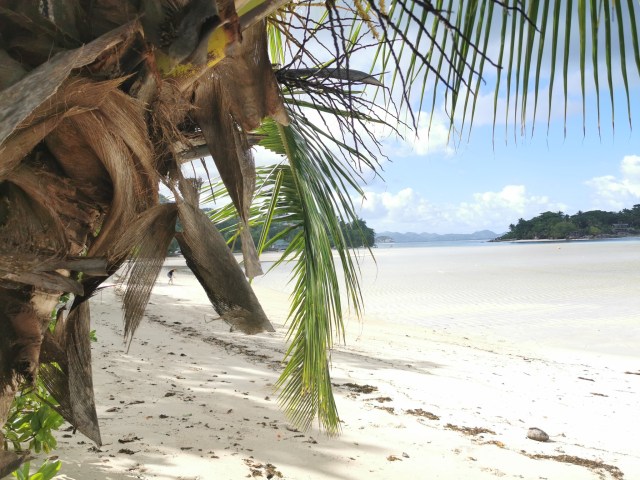
So what should a first time visitor to the Seychelles need to know before departing for Mahé Island (the nation’s main island)?
The first thing to consider is what the weather is going to be like.
The Seychelles experiences a tropical climate characterised by two main seasons: the dry season and the wet season. However, it’s important to note that due to its location near the equator, the Seychelles generally enjoys pleasant weather throughout the year, with temperatures ranging from warm to hot.
May to September is generally considered the dry season in the Seychelles, with less rainfall and lower humidity. The months of June, July, and August are usually the driest. During this time, you can expect plenty of sunshine, clear skies, and relatively cooler temperatures. The average temperature during this season ranges from 24°C (75°F) to 30°C (86°F), making it a popular time for visitors.
For our trip, Holly and I visited in May which proved a fantastic time to go to Mahé Island. On average temperatures ranged from 24°C (75°F) to 29°C (84°F) and the skies were generally clear. I think during the nine nights we were there, it only rained significantly once. However, with the dry weather comes the humidity and this can be really taxing at times!
It’s worth packing plenty of sun lotion to keep your skin protected and also plenty of insect repellent as the local wildlife does have a tendency to leave you with a few itchy bites.
The next thing to note is the currency.

The local currency in the Seychelles is the Seychellois Rupee (SCR). I’d recommended carrying a small mount of cash with you for everyday expenses, especially if you plan to explore local markets or smaller establishments.
ATMs are widely available across Mahé Island, allowing you to withdraw Seychellois Rupees using your debit or credit card (you cannot get the Rupee in the UK ahead of your trip). I’d advise withdrawing a couple of hundred pounds-worth of Seychelles Rupees when you arrive at the airport. You’ll find a couple of ATMs in the main arrivals hall after you’ve gone through immigration and baggage collection. There are also currency exchange stores at the airport as well.
However, if you don’t wish to carry cash on you, then all major credit cards are widely accepted through the Seychelles.
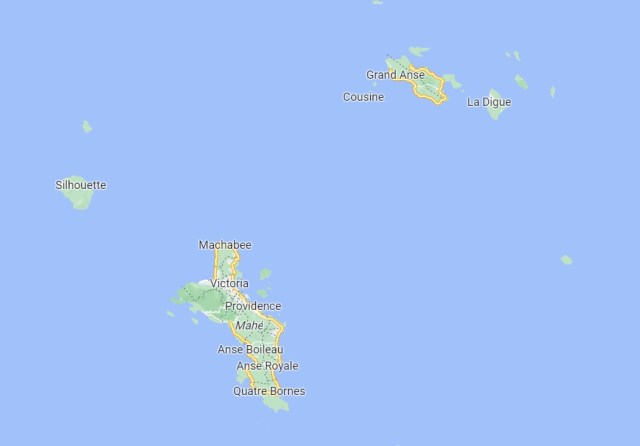

The next area to think about is power points.
Conveniently for British travelers, the plug type for the Seychelles is plug type G, which is the plug that has three rectangular pins in a triangular pattern that we use in the UK. The Seychelles operates on a 240V supply voltage and 50Hz.
Another thing to think about is the time difference. Mahé Island operates on Seychelles Time (SCT), which is three hours ahead during Greenwich Mean Time and four hours ahead during British Summer Time. On your way out you’ll lose three or four hours and gain them back upon your return.
The final thing to consider is the language of the Seychelles.
Throughout the various islands Seychellois Creole, English, and French are regularly spoken. For English speakers only – like Holly and I – English was widely spoken and understood by the majority of local people so we didn’t have any trouble communicating with locals.
Now all that’s left to do is pack your bags and dive in to exploring the paradise that is Mahé Island and the Seychelles.
Getting there
As a UK traveller, getting to this heavenly destination is an adventure in itself.
The first thing you must do before leaving the UK is to fill out the Seychelles Embarkation Form.
This form is a mandatory travel document required by the Seychelles government for all incoming travellers. Whether you’re arriving by air or sea, the form is an essential component of the entry process and must be completed before your departure to the Seychelles.
The primary purpose of the Embarkation Form is to collect essential information about travellers before they arrive in the Seychelles. This information is crucial for various reasons, including ensuring the safety and security of the country and its visitors. The form also aids the government in tracking visitor numbers, understanding travel patterns, and facilitating emergency responses if needed.
The information required typically includes standard personal information, such as your full name (as it appears on your passport), passport number and country of issue, nationality and country of residence, date of birth, gender, contact details, flight numbers, accommodation during your whole stay, purpose for visit and when you’ll be leaving. You’ll also need to submit an passport style electronic photo of yourself and a scan of your passport to compare with.
To ensure a smooth entry into the Seychelles, it’s essential to fill out the Embarkation Form accurately.
The Seychelles Embarkation Form can typically be completed online before your departure and is available about 10 days before you leave. The online platform allows for a quick and efficient submission process Upon completion, you will receive a confirmation email with a unique reference number. It’s advisable to keep this reference number handy, as you might need it during your travels.
One thing to be careful on is the question about your starting location for your trip. The answer to this will depend on if you are doing a layover or if you are stopping somewhere else for a number of days beforehand.
If you are doing a layover, then your starting destination would be the UK. If, however, as we were, you are staying in Dubai (or somewhere else) for a number of days, then your starting location is the UAE (or wherever you’ve been).
With that safely done and submitted (at a small cost of £9.95 per person), it won’t take long for them to send confirmation to you via email that your entry has been accepted.
The next part of the adventure is that there are no direct flights from the UK to Seychelles. This means any UK traveller will have to make a stopover during your journey.
The most common stopover destination is Dubai in the UAE – where Holly and I stopped and can be read about in a separate blog – where the Emirates’ hub is located.
You can either do this as a layover that typically lasts around two to three hours, allowing you to stretch your legs and explore the impressive Dubai International Airport or – as we did – extend your trip to spend time in the Arab country.
Depending on how you decide to do it, the total travel time from the UK to Seychelles, including the stopover, usually takes around 11 to 13 hours. Keep in mind that this duration can vary slightly based on the specific route and the length of your layover. If you break the journey up, then the flight time from Dubai to the Seychelles is between four-and-a-half and five hours.
Given the size of Seychelles International Airport, very few airlines travel there and trips can only be made from a variety of starting points. The main one is the UAE (both Dubai and Abu Dhabi), while other airlines also travel from Kenya, Ethiopia Qatar, Sri Lanka and Russia.
It made the decision very easy for Holly and myself as we made our booking from Dubai to the Seychelles on Emirates. The large plane we travelled on was well stocked with films and TV shows to enjoy and food and drink was readily available for us at regular intervals.
As already mentioned, for our trip, we headed to the East African island in early May. This is an ideal time to visit Seychelles, as the weather is mild and the islands are generally less crowded.
While flight prices can fluctuate, the average cost of a return ticket from the UK to Seychelles on Emirates in May can range from £600 to £900 per person, depending on factors like booking time, demand, and seating class.

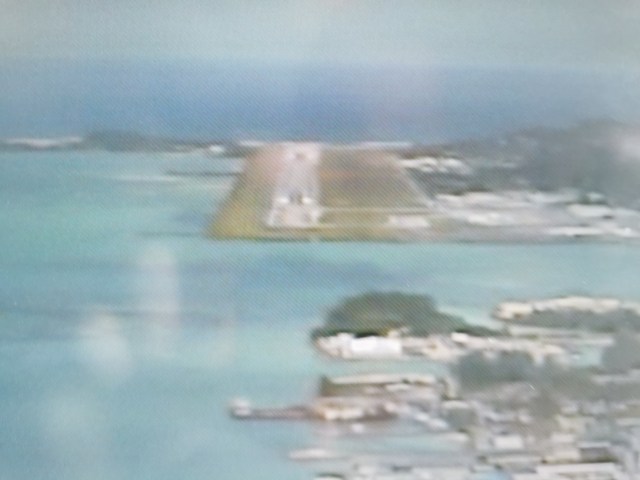
As we flew to the islands, our view out of the plane window was one of pure ocean. Very little land obscured our sight until we drew closer to our destination. Then, as we got lower, we saw numerous islands including Mahé Island itself. Lush green canopies line the mountain sides before the small airport runway became visible in front of our aircraft.
After touching down, we found that Seychelles International Airport offered a seamless and welcoming experience for us as travellers. The airport’s modern facilities, efficient immigration services, and friendly staff ensure a smooth entry into this island paradise.
After disembarking we made our way into the arrivals hall and went through the high tech surveillance system which checks your appearance against the records they have on file from the previously filled in Embarkation Form.
From there, it’s through passport control – where you get a nice new stamp in your passport – and on to the baggage collection. This was the one bit that concerned us and slowed us down a bit. As bags were added – and subsequently removed from the carousel – more and more people filtered out of the airport leaving only a handful of us waiting for our luggage. Finally – and with only a few people left – our luggage made a welcome appearance.
Much relieved, and with luggage in hand, we cleared customs, and found our way out of the airport to meet our driver who would take us to our hotel on the far side of the island.
However, if you’ve not booked transportation there are numerous options available including taxis, rental cars (more on these later on), and shuttle services.

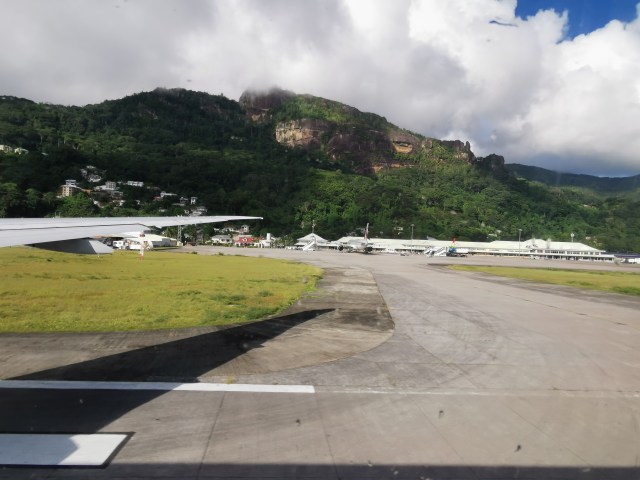
Where to stay
When it comes to dreamy tropical getaways, the Seychelles ranks high on the list of idyllic destinations.
With its pristine white sand beaches, crystal-clear turquoise waters, and lush green landscapes, it’s no wonder travellers from around the world flock to this tropical paradise.
Nestled on the outskirts of Mahé Island is the exquisite Constance Ephelia.
Constance Ephelia is where indulgence meets serenity offering an unforgettable experience for travellers seeking tranquility, opulence, and a touch of paradise.
The resort is a sanctuary of luxury, situated on the northwest coast of Mahé. This sprawling hotel covers an impressive 120 hectares of lush tropical gardens, bordered by two stunning beaches – Port Launay (or the North Beach) and Lans Ilet (or the South Beach).
Getting to this tranquil resort is a beautiful 45-minute drive from Seychelles International Airport, that goes over the mountainous middle of the island around some of its most winding – and potentially treacherous roads.
At Constance Ephelia, you can expect to find competitive rates during this period, allowing you to experience the resort’s elegance. While prices may vary depending on factors such as room category and length of stay, you can typically find attractive deals and packages tailored to suit different budgets.
That’s not to say, however, that a stay here will be cheap and you’ll have to pay half the money upfront with the rest of the money paid on departure.


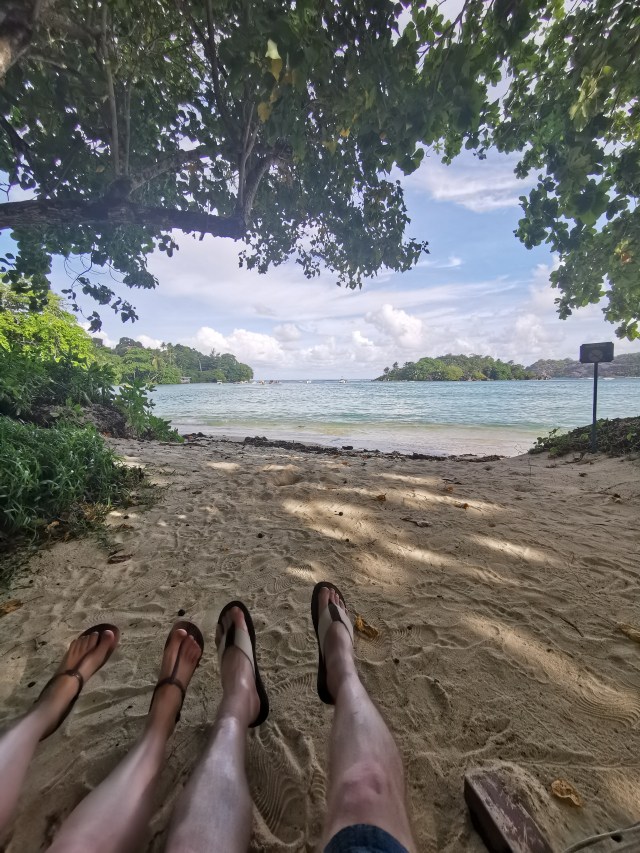
To give you an idea, Holly and I booked nine nights at the resort and included a package that gave us breakfast and dinner each day (minus drinks for the evening meal). On top of this, we also added a variety of other activities to our package when we arrived (including scuba diving, zip-lining, an evening meal on the beach and a spa day session with two massages) as well as numerous food and drink items around the pools and items from the shop.
It meant that in total, Holly and I spent £5,497.05 for the stay and activities, which was a slightly painful way to end our time on the island (although we had budgeted for this before we arrived). If you’re worried about the costs, then you can keep up-to-date with your expenditure in your room via the television which itemises your bill as you go.
Despite the cost, the money is well spent.
Constance Ephelia offers a variety of luxurious accommodations, ensuring that every guest finds their perfect retreat.
Our choice of room was the junior suite. These beautifully appointed suites provide a comfortable and stylish space, featuring modern amenities and a private furnished terrace (or balcony) with breath-taking views of the Indian Ocean or lush gardens.
Our room was on the ground floor and only a few metres away from the beach where crabs (there are thousands of them burrowing in the sand throughout the resort) march to the sea and the sound of the waves lapping against the shore makes for a welcome morning wake-up.
The room was large and always well stocked with bottles of water (don’t drink the tap water here) as well as cleaned (sometimes twice a day) by the ever-attentive staff. The bedroom led into a stylish bathroom fit with a large bath tub and a separate walk-in waterfall shower; the perfect way to clean up after a day in the ocean or by the pool.
For those with larger budgets, there is also the option of other room types. These include the senior suites – offer separate living areas, larger terraces, and private pools – or beach villas – providing direct access to the soft sands and turquoise waters, while also boasting private pools, outdoor dining areas, and a personal butler service.



While the rooms are splendid, it’s the other facilities that Constance Ephelia offers that sets it apart. For starters, there are numerous dining options (more on those later) spread across the resort, that each showcase a unique culinary experience.
Then there is the superb and relaxing spa and wellness centre – called – USpa by Constance – where we were able to indulge in relaxation and rejuvenation. Situated in the middle of the resort amidst lush tropical gardens, the spa offers a range of wellness treatments, including massages, facials, and holistic therapies.
For those looking to while away the hours and get some much needed rest and relaxation, there are a number of swimming pools to splash in or sit around, each served by its own bar. Towels (claimed using your towel token given to you on arrival which is then given back when you return your towel) and deckchairs are available across the resort to use at your leisure.
For those seeking more active pastimes, there are a variety of water-sports to try ranging from scuba diving and snorkelling to kayaking, windsurfing and paddleboarding.
Constance Ephelia in the Seychelles is a slice of paradise that blends luxury, natural beauty, and unparalleled service. Whether you’re seeking a romantic retreat, a family vacation, or simply a rejuvenating escape, this resort caters to your every desire.
Constance Ephelia is the perfect choice for an unforgettable experience in the Seychelles.
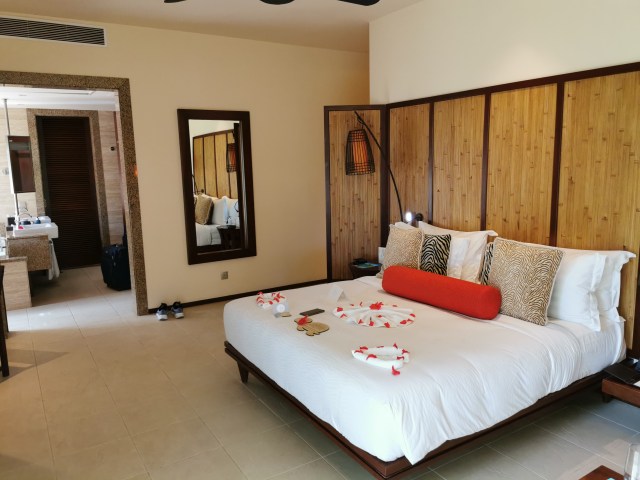
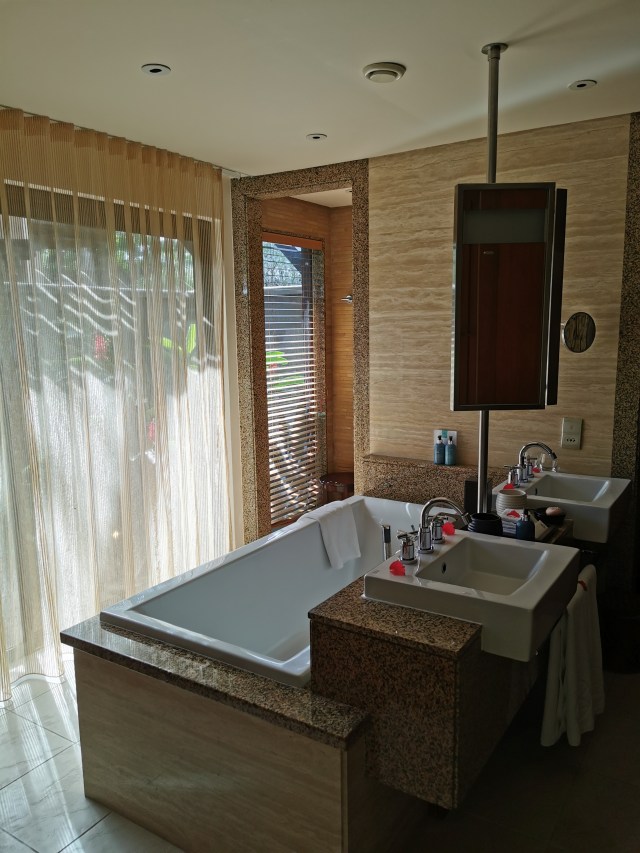

Getting around
When you head to a small island nation like that of the Seychelles, it’s worthwhile thinking about how you plan to get around during your stay. It was a thought that Holly and I had ahead of our trip and one that I’m glad we planned for.
The first thing to note is that, despite Mahé Island appearing to be small in size – which it is – it’s not accommodating for walking between activities or sites. Therefore, the best ways to get around are either using the taxi services available or to hire your own car.
Obviously, if you want to get to other islands, you’ll need to either use a boat charter or a plane, but for the purposes of this blog, I’ll be just looking at getting around Mahé Island itself.
Taxis are a popular mode of transportation on the main islands of Seychelles, especially Mahé, Praslin, and La Digue and are usually readily available at airports, major hotels, and tourist hot-spots.
When we arrived in the Seychelles, we used a taxi to take us to the resort (which was about 45 minutes away from the airport. For this trip it cost us in the region of £45 (around 800 Seychelles Rupees) which we’d withdrawn from a cash point at the airport after we arrived before heading out to grab a taxi. It’s important to remember that, the taxi drivers prefer to take cash for their fares which means it’s best to have some on you before hailing a cab.
To avoid any issues while travelling by taxi, there are a few things to watch out for to ensure a smooth and safe experience.
Firstly, make sure to only use licensed taxis. These taxis have proper registration and adhere to safety standards. They usually have a taxi sign on top of the vehicle and a license plate starting with the letter “T.”
Always negotiate the fare before leaving. Taxis in Seychelles may not always have meters, so it’s important to negotiate the fare before starting the journey. Ask the driver for an estimated cost to your destination before getting in the taxi. Having an idea of the expected fare will help you avoid overcharging.
An extension of that is to confirm the currency you plan to pay in. Make sure you’re on the same page as your taxi driver about the currency you’ll be paying in. While most will charge in Seychelles Rupees, some drivers may try to charge you in a different currency to their advantage.
Check the vehicle before setting off. Ensure the taxi is in good condition and has working seatbelts for all passengers and always buckle up for your safety. If you feel uncomfortable with the driver’s behaviour or driving, don’t hesitate to ask them to drive more cautiously or stop if necessary.
Also, as you would in any country, keep your valuables safe and avoid displaying expensive items or large amounts of cash while in the taxi.
Before heading off, confirm the destination with the driver and ensure they know exactly where you want to go. If possible, show the driver the address on a map or your phone to avoid any confusion.
Finally, consider the tip. Tipping is not obligatory in Seychelles, but it’s appreciated if you received good service. You can round up the fare as a tip if you wish. It’s not expected but is welcome.
During our trip we used a taxi twice (once to get to the resort when we arrived and once to get back to the airport to pick up a hire car for a couple of days.
And on that note, the next option I’ll cover is hiring a car.


The joy of renting a car in Seychelles is that it provides you with the freedom to explore the island at your own pace and discover hidden gems off the beaten path.
While we planned to spend the vast majority of our nine nights within the resort, we wanted to spend two or three days at the end exploring the island at our leisure by car. We also coincided this with hiring the car at the airport which meant when we returned for our early flight home we would drive ourselves there and not have to wait for a taxi.
The first thing to note is that to rent a car in Seychelles, you must be at least 21 years old and hold a valid driver’s license. An international driver’s permit is not required for short-term stays (although for £5.50 each from the Post Office, Holly and I got one each just in case) but may be necessary for longer visits.
Like the UK, the Seychelles follows left-hand driving, and seat belts are mandatory for all occupants.
The main roads on Mahé Island are generally well-maintained, but some smaller roads and those to the more remote parts of the island will be rougher. You’ll also need to exercise caution while driving and be prepared for narrow, winding roads in the central mountainous regions.
Be cautious that many roads have large drops to the sides and very little in terms of safety barriers. This means, the higher up the mountain roads you get, the more nerve-wracking the route can become. We found that if we drove sensibly, yet confidently, we were best placed to meet the challenges that the Seychelles up-and-coming road network threw at us.
A prime example was during one trip out when Holly was driving. We came to an extremely sharp hairpin corner on a very steep hillside that I wasn’t convinced our little car was going to make it up without rolling back. Somehow, Holly got us to the top of that hill (perhaps on sheer willpower) but it really was squeaky-bum time for a few moments when the car almost stalled and we could have just rolled off a cliff face had we gone backwards!
The speed limit of Seychelles is 40kmh in cities and areas with heavy pedestrian traffic while its 60kmh on open roads and highways. Locals drivers in Seychelles can be aggressive and they can overtake suddenly and may not respect traffic laws, so it is important to stay vigilant while driving.
There are numerous petrol stations are available on Mahé Island, but we found our car to be pretty economical with fuel consumption. Despite driving the full length and breadth of the island over a couple of days we didn’t refuel the car until just before we took it back to the airport meaning in total we only spent around £30 in petrol.
The best place to get fuel is just outside the airport at the petrol station there. When we pulled up to the pumps we simply told the attendant to fill the car up to the maximum and then paid for our fuel on credit card.
In terms of parking, we found that – even within Victoria – there were plenty of options to park for free and during our entire stay, we never paid for parking the car. Quite often, when you pull up to a beach alongside the road, there will be a small dirt car park or a lay-by that you can simply pull over into and leave the car while you explore the area you’ve arrived at.
With all that in mind, all that’s left to do is rent a car and start exploring.
There are a few car hire firms available within the Seychelles but the one we selected was Sixt Rent-a-Car. They had offices located both in and around the capital, Victoria as well as at the airport.
While both of these locations were about 40 minutes away from our resort, we thought that the airport would be easier to deal with as we knew where the rental desk was there.

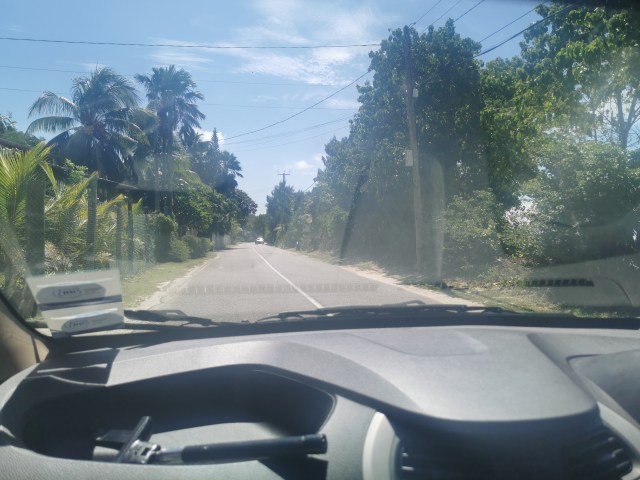
In total, we hired a small car – a Kia Picanto model – for three days and included all the extra protection we could buy considering we were unsure what the driving situation would be like. As part of our rental we included theft protection, a minimum excess, collision damage waiver and an additional driver so we could both share the responsibilities. This cost us 322.53 Euros (the currency they billed us in) equating to around £280.
If I’m honest, we probably went over the top with the protection. The car we were given was pretty banged up to start with and the only major instruction we were given was to “not park below any coconut trees” as a falling coconut can really “put a dent in the roof of the car”.
Finally behind the wheel after signing the documents that needed signing, we headed out from the airport onto the main roads of the Seychelles.
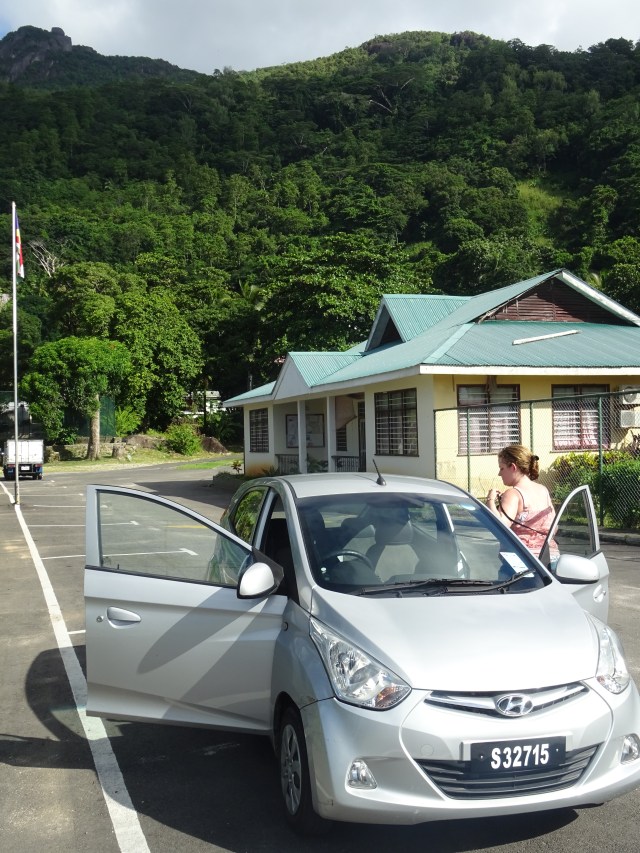

Top sites
Holly and I planned to spend a lot of our time in the Seychelles at the Constance Ephelia resort so, for the purpose of this blog, I will split this section into activities that can be enjoyed at the resort before looking at how we explored the rest of the island by car.
Life at Constance Ephelia is a healthy a mix of relaxation and adventure.
For those looking to just unwind and spend their time in the Seychelles – by the pool or the ocean – can do so by one of the many pools at either end of the resort or on one of the two pristine, secluded, beaches that beckon you to relax and soak up the sun.
However, while we wanted to make the most of the pools we were also both keen to try some of the activities that the resort had on offer.
One that immediately jumped out at us was ziplining amidst tropical canopies.
The resort has eight ziplines perched high above the treetops, allowing you freedom to soar through the lush vegetation. Taking the zipline tour not only provided us with an adrenaline rush but also offered awe-inspiring panoramic views of Port Launay.
The ziplines measure between 80m and 120m in length, with lines around 20m to 24m high.
Traversing from platform to platform, the experienced guides ensured our safety and made the ziplining experience an unforgettable journey.
The ziplining centre is located to the north of the resort and the trail starts up by the exclusive private villas. However, to take part in the adventure – which lasts around an hour and a half – the company asks that you pre-book one of the slots two days in advance. This can be done via the reception service at the hotel. Ziplining costs 845 Seychelles Rupees per adult (around £50) and this can be added to your hotel bill.
Holly and I had a great time doing this, although I’d warn anyone taking part to ensure that you get your buckles and straps comfortably on before heading out as I had one that was digging into my left-hand side and left me with a rather colourful bruise after flying through the trees.
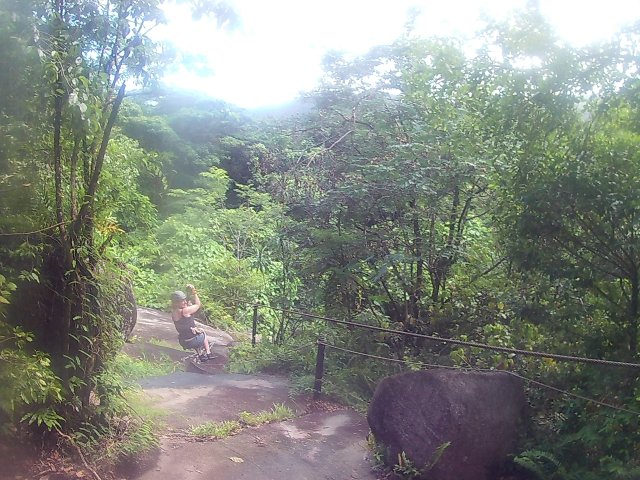
Another activity that is worth trying is the variety of water sports available.
From the north beach – and via the dive centre – Constance Ephelia offers a plethora of watersports to satisfy every aquatic craving.
If you bring your own snorkel equipment – as we did – you can dive into the azure waters and explore the vibrant marine life at your own leisure. However, for those that don’t, you can still hire equipment from the dive centre.
However, if you prefer staying above the surface, you can try your hand at windsurfing, kayaking or paddleboarding; allowing you to experience the tranquility of the ocean at your own pace while getting a great workout in the process.
Holly and I favoured the latter two options and hired two paddleboards and life vests from the dive centre. The good news here is that – so long as they are available – you can hire these any time the dive centre is open and as long as you are out for no longer than one hour, there is no additional cost for this activity.
I’d never done paddleboarding before and, if I’m honest, didn’t really take to it. My balance was awful and I just never felt comfortable on the board. Holly was much better at this than me, but I found an hour of this more than enough.
We also took out a double kayak for an hour and got a lot of enjoyment paddling our way around the bay.
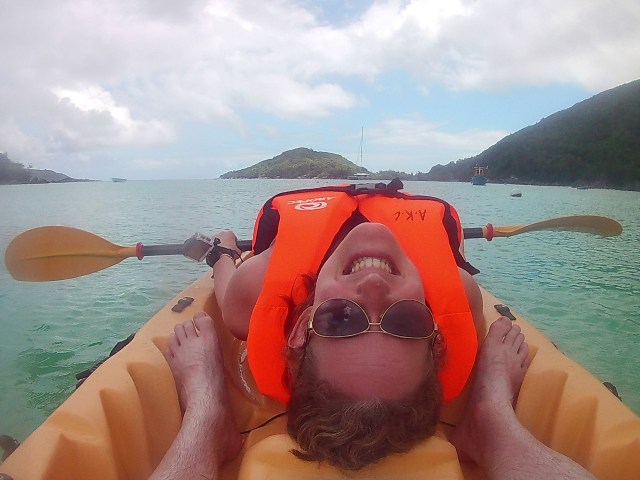
One activity that I had firmly on my Seychelles bucket-list was the chance to get up close-and-personal with the countries famous giant tortoises.
For those that want to see the tortoises in their natural environments, they can try and organise trips to the tortoise sanctuary on Curieuse Island; although this is fairly tricky to do as you can only get to the island from Praslin which, in itself, is an hour and a half away from Mahé Island by boat.
That’s why the opportunity to meet and feed the giant tortoises at Constance Ephelia is a chance too good to miss out on.
At the heart of the resort sits the giant tortoise enclosure. It means that at any point you can go to the area and view the numerous tortoises in their spacious home.
However, there is the added bonus that – twice a day and free of charge – guests at the resort can go into the enclosure and meet and feed these magnificent creatures.
It’s something that has become a cherished tradition for both guests and staff alike. The daily feeding sessions take place in the late morning and early afternoon, ensuring visitors have ample opportunities to interact with these ancient reptiles.
The morning feeding session usually starts around 10am. As the sun rises over the tranquil resort, guests gather near the designated feeding area for the chance to get up close and personal with these gentle giants.
The afternoon feeding session commences at approximately 2pm and offers a fantastic chance for those who missed the morning session to engage with the tortoises and participate in the enchanting experience.
The feeding process is carefully supervised by trained staff members to ensure both the well-being of the tortoises and the safety of the guests. The resort provides specially selected tortoise food that meets their dietary needs and ensures they receive a balanced diet.
After entering the enclosure, Holly and I got some food to give to the tortoises – made up of ferns and other vegetations. We then had the freedom to approach these giant animals and feed them and even stroke their heads and take a few photos for our own keepsakes.
The tortoises are used to this process and readily approach guests in their enclosure (mind your feet as they will stand on you if you are in the way and they are pretty heavy). Also, keep your fingers away from their chomping mouths as they feed to avoid a nip.
We were able to hold out the food in our hands and experience the joy of seeing them munch on their tasty treats.
One resident of the enclosure does get more attention than some of his other camp mates and that’s the resorts oldest resident; Dusty.
Dusty, is the largest tortoise here and is estimated to be over 150 years meaning he was alive when Queen Victoria was still on the thrown (the country’s capital city namesake) and when the Titanic sank on its fateful maiden voyage.
Dusty’s captivating presence leaves a lasting impression on all who encounter him. His large, weathered shell is a testament to the many decades he has spent roaming the Seychelles landscape. Visitors often find themselves in awe of this living relic, contemplating the remarkable history he has witnessed and the changes he has experienced over the years.
Positively, Constance Ephelia is committed to the preservation of these magnificent creatures and their natural habitat. Through carefully monitored feeding programme and environmental initiatives, the resort plays a crucial role in protecting the giant tortoises and supporting their population growth.
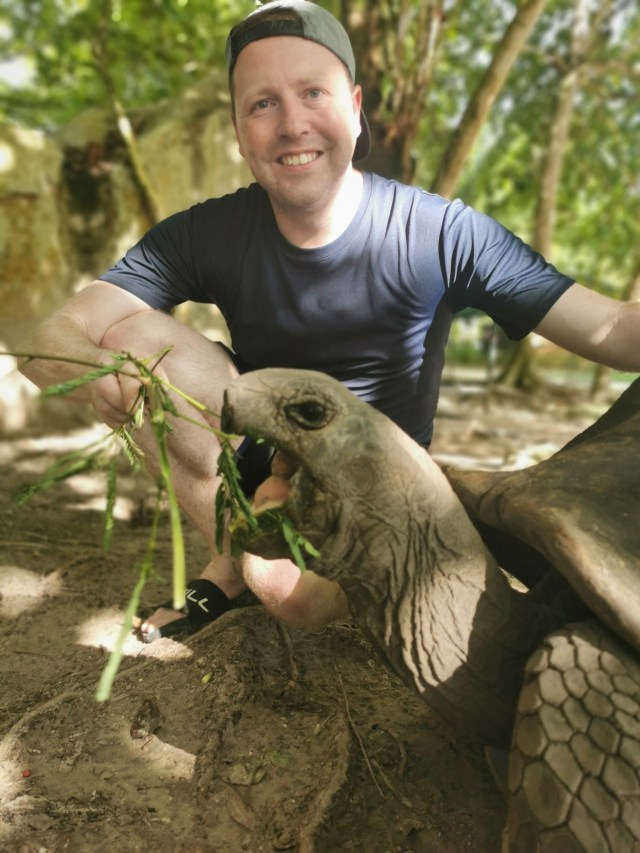

Nearby to the giant tortoises is another slice of luxury.
USpa at Constance Ephelia is a luxurious tranquil haven of relaxation and revitalisation that offers an array of rejuvenating treatments, top-notch facilities, and an unforgettable spa experience.
Holly and I were very excited to use the spa here, and pre-ordered a 90 minute signature massage each when we booked our room via the website for a cost of £257.96 in total (£128.98 each). While this is a lot of money, the service and quality of massage and body scrub you get more than makes you forget how light your wallet feels afterwards.
Having arrived at the spa on the day of our treatments, we were shown around the facilities and filled in a short questionnaire. Soon after arriving, we were welcomed by our individual masseuses and taken – separately – to our rooms to begin our treatments.
Here we showered and were given robes to go between the shower and massage table as well as disposable underwear that is worn while the massage takes place.
The time flew by – in a good way – and both of us left feeling refreshed and extremely relaxed.
After finishing our sessions we were each greeted with a fresh coconut where we were able to enjoy the refreshing taste of the coconut water inside.
While this treatment was the one we chose, there are a variety of others available (for a range of price brackets) including Swedish, Balinese, deep tissue, and hot stone massages, as well as luxurious facials -using premium skincare products tailored to your skin type – gentle exfoliation and nourishing body wraps.
Yet, you don’t have to have a treatment booked to use the facilities and entry to USpa is complementary with a room booking – while people not staying at the hotel can use it as well by buying a single day entry. It meant that Holly and I used the facilities on more than one occasion during our stay.
The spa is one of the most luxurious I’ve ever witnessed. Inside you forget you’re even in the resort itself and laying on the loungers you can look up and see the stunning mountain scenery all around you.
Away from the treatment villas, USpa also has separate sauna and steam rooms as well as a hydrotherapy pools where you can immerse yourself and soothe your muscles with the hydro-massage jets.
In the centre of the spa stands the yoga pavilion where guests can practice amidst the tranquility of nature as part of one of the regular yoga sessions while sun loungers are scattered throughout for guests to lay back and switch off from the outside world.


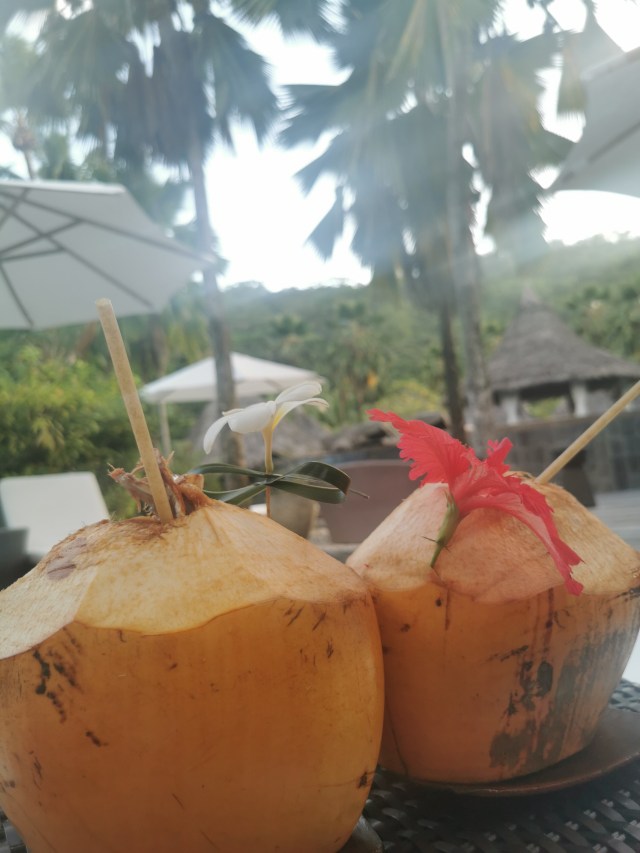
For those who are fans of breathtaking underwater landscapes and vibrant marine life, the Seychelles is a destination that should near the top of your scuba diving bucket list.
As a keen – albeit infrequent – pair of scuba divers, Holly and I were eager to make the Seychelles our latest dive location. We’d explored a few options for diving but the centre that stuck out to us was one located, rather conveniently, from the north beach of our very own Constance Ephelia resort.
The dive centre in question was UDive . In advance of arriving I had organised two dives for myself and one for Holly via WhatsApp and was told to be at the centre in the morning so we could do the necessary paperwork and get fitted with our equipment, and hear the dive briefing.
Included in our discussions was the price which came in at 1,500 Seychelles Rupees per person per dive (around £90) which, given that we were staying at the resort, was added to our room bill.
The centre provides top-notch diving equipment, well-maintained boats, and knowledgeable staff who are always eager to share their passion for the underwater world.
We were two of a group of six divers and found the centre to be extremely professional and efficient. On a map on the wall, we were shown exactly where we would be diving and given a clear explanation of what we could potentially under the water. Needless to say, we were not disappointed.
After taking our equipment to the boat on the shore, we raced across the water for around 15 minutes to the site. Once anchored, we put on our tanks, and did a back-roll entry. With everyone in the water, our scuba adventures began.
One of the most alluring aspects of diving with UDive is the opportunity to witness an incredible diversity of marine life. As we descended into the crystal-clear waters, we were be greeted by an explosion of colours and life that characterises this pristine corner of the Indian Ocean.
As schools of fish swam around us we were also able to spot large rays swimming by, lobsters on the ocean floor, a couple of sharks (possibly reef sharks) and – much to my delight – a couple of sea turtles, effortlessly swimming in the current.
UDive is a centre that caters for all divers; from beginners taking their first breaths underwater to experienced divers who are more fish than human. Beginners can explore shallow coral gardens teeming with fish and other marine creatures, while more experienced divers can venture deeper to encounter thrilling drop-offs and underwater pinnacles.
Diving with UDive gave us an unforgettable underwater adventure that left us with memories to cherish for our whole lives.


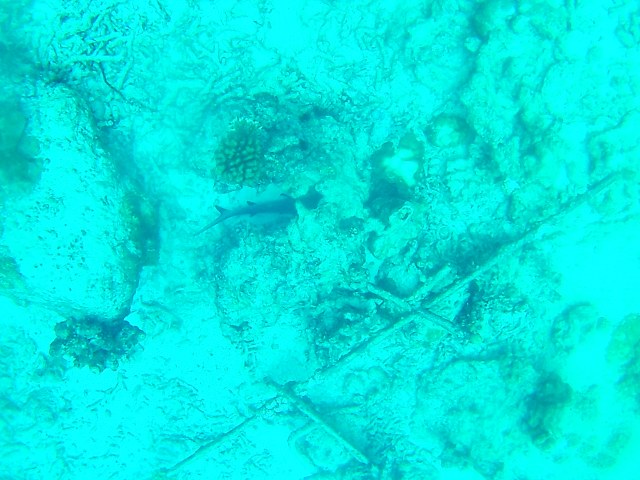

So far, this blog has looked at activities to do in and around the resort, but there is a whole island to explore as well.
To do this, Holly and I hired a car for a couple of days at the end of our trip and divided the island into two halves in order to maximise our time at each stop we wanted to see. What followed were two breathtaking road trips around Mahé Island.
The first trip saw us explore the northern beauty of the island.
A road trip around the northern part of Mahé Island, is quite the adventure. From vibrant urban life to the idyllic beaches, this journey is a tapestry of stunning scenery and cherished memories.

The route we selected from our resorted covered an array of natural wonders and charming sights as well as visiting to the nation’s capital city; Victoria which made up our itinerary’s first stop.
Having picked up the car at the airport, we were already most of the way to Victoria when we first hit the roads in the Seychelles. Fortunately, this part of the island – as you head towards the city centre – has some of the best maintained and fastest roads, making our introduction into driving here a relatively easy one.
Victoria is not like most capital cities. In fact, on the whole it has the appearance of a large town. With the usual backdrop of high-rise skyscrapers replaced by the much more aesthetically pleasing mountains, Victoria is a colour and chaotic mass of people and small businesses.
Having found a small car park on the edge of the city – which was free to park in – Holly and I walked to the centre where we found one of the city’s main attractions; the Victoria Clock Tower.
Located in the heart of Victoria, the clock town is a charming and iconic landmark that holds historical significance for the archipelago. Erected in 1903, the clock tower was a gift from the British colonial government to commemorate the diamond jubilee of Queen Victoria.
Standing tall at 30 feet, it is an elegant structure made of iron, modelled after London’s famous Big Ben. Its prominent position at the junction of Francis Rachel Street, Independence Avenue, and Albert Street makes it a focal point of the city, drawing locals and visitors alike to its captivating presence.
Our next stop in the city was just a few streets away on Quincy Street. Here we found the striking, Arul Mihu Navasakthi Vinayagar Temple.
The Hindu temple is a significant religious and cultural landmark in Victoria and stands as a testament to the vibrant Indian community’s presence in Seychelles. The temple’s name “Arul Mihu Navasakthi Vinayagar” translates to “The Blessed and Ever-Powerful Temple of Lord Ganesha,” and serves as a place of worship for devotees of Lord Ganesha.
The temple’s architecture is a captivating blend of traditional South Indian and contemporary styles, adorned with intricate carvings and colourful decorations that exude a sense of spiritual serenity. Devotees and visitors alike are greeted by a towering gopuram (ornate entrance tower) that features intricate sculptures of Hindu deities, signifying the temple’s sacredness.
Removing our shoes before entering, Holly and I went inside to have a look around. This was my first ever visit inside a Hindu temple and compared to its bold exterior, a lot of the interior was fairly plain and understated. There was no entrance fee to go in, and we were also allowed to take pictures during our visit. Taking a quiet and respectful look around, Holly and I saw everything we wanted to see and made our way back out into the Seychelles sun.
On our way back to the car, we took a detour down Market Street and through Sir Selwyn Selwyn-Clarke Market. This lively marketplace is filled with fruits, vegetables, fish and meats, with locals trying to sell their wares to anyone passing.
Once we were through, we headed back to the car and on to our next stop on the outskirts of Victoria; the Stade Linité stadium.
As is often the case when we visit a football or sporting stadium, this visit was more for me than it was Holly. Pulling the car up at the empty car park for the closed sports arena, we were able to grab a few glances inside the ground – which usually plays host to the Seychelles national football team. Even though we were not catching a live match, the stadium’s impressive architecture against the backdrop of the Seychelles’ verdant landscape made it worth a visit.
During our visit, there were significant renovations taking place, with the grass being completed dug-up and people working all around to lay a new surface. So, after taking a few snaps of the outside of the stadium, we went back to the car and drove on.
The third stop was also in Victoria and was at the National Botanical Gardens.
Located just a short distance from the stadium, these gardens are a sanctuary of rare and endemic plant species, providing a tranquil setting to stretch our legs and enjoy the local nature.
Arriving at the entrance, we parked our car in one of the few remaining car parking spaces of the small car park and made our way to the ticket office. Entrance to the gardens cost us 250 Seychelles Rupees each (around £15 per person).
Taking a leisurely stroll through we were able to see a variety of wildlife including a number of bats nesting in the tree tops as well as a few giant tortoises in a large enclosure at the back of the gardens.
The visit concluded our time in Victoria and taking the car we started the 8km drive north to our next stop.
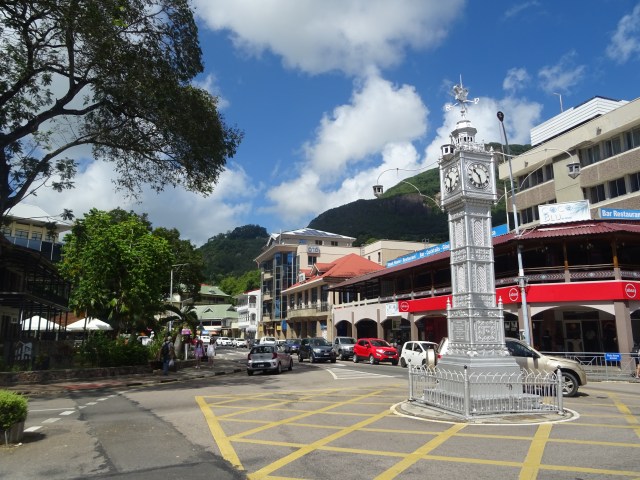
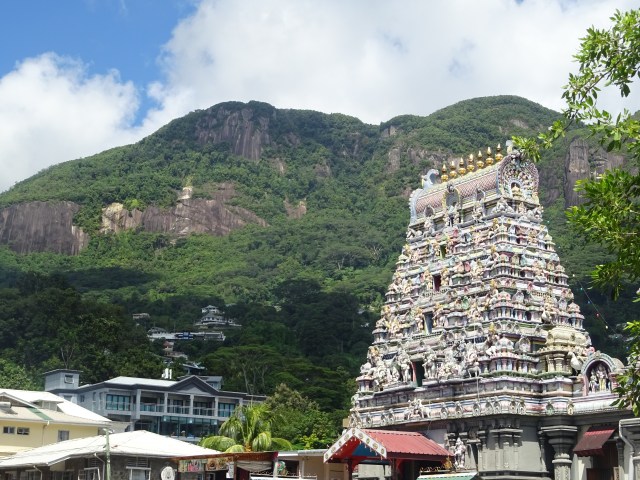
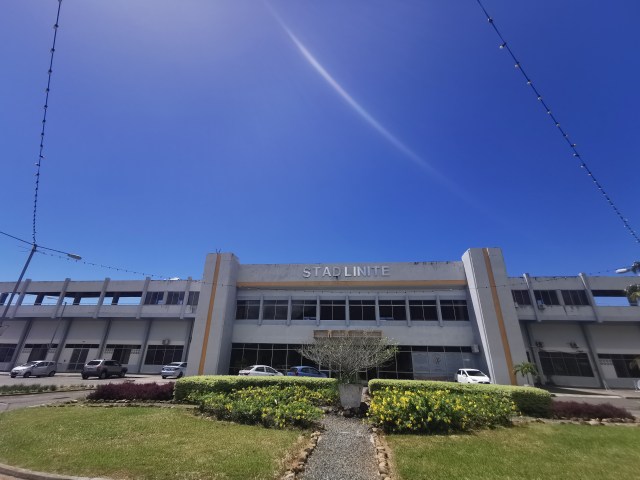

Making our way out of the city we soon arrived at North East Point; the first beach stop of our trip outside of the resort.
North East Point is a secluded coastal area offering breathtaking views of the Indian Ocean. With nobody else around, the pristine beaches gave us the opportunity to dip our toes in the crystal-clear waters.
Moving on, we drove a further 5km around the north end of the island to Glacis beach. This secluded spot gave Holly and I the chance to set ourselves up on the small sandy beach and don our snorkeling gear for a dip in the ocean.
While the water wasn’t that calm – and the current was quite strong – we were able to snorkel near the beach and saw a vast array of sea life just below the surface in among the rocks and coral reef.
Continuing to follow the stunning coastal road round the top of the island, we were blessed with ocean views from one side of the car and lush vegetation to the other.
The next stop of the trip was Beau Vallon beach and would take around 12 minutes to drive the 6.5km distance.
This popular tourist hub is renowned for its beautiful sandy beaches, diverse water sports activities, and a variety of restaurants serving up tantalising Creole delicacies.
Parking our car on the roadside, we made our way onto the beach for a beautiful stroll. Crystal-clear ocean waters were being regularly fed by small inland streams flowing down the beach and into the open seas.
While we were here, we also took the opportunity to head into some of the local shops and purchase a few souvenirs to take home, including some rather fetching coconut shell bowls.
With the vast majority of the northern rim of the island covered, we started to plan our journey back to the resort. Using our map, we knew that we were going to have to head back towards Victoria to find a route that would take us up, and over, the mountainous region making up a large proportion of the centre of the island.
Our journey took us through the scenic route of Bel Air. Not to be mistaken for the Fresh Princes’ home, this village area offers captivating vistas of lush hillsides and dramatic landscapes from one of the highest points on the island.
Yet while the route is beautiful to observe it is one not for the faint hearted. Sheer drops and sharp winding roads make for a challenging drive, with traffic coming at you from the other direction (and often not inclined to give way).
Holly was behind the wheel for this part of the drive and managed to navigate us safely through the hillsides and back to our resort for a welcome and much needed drink beside the pool.

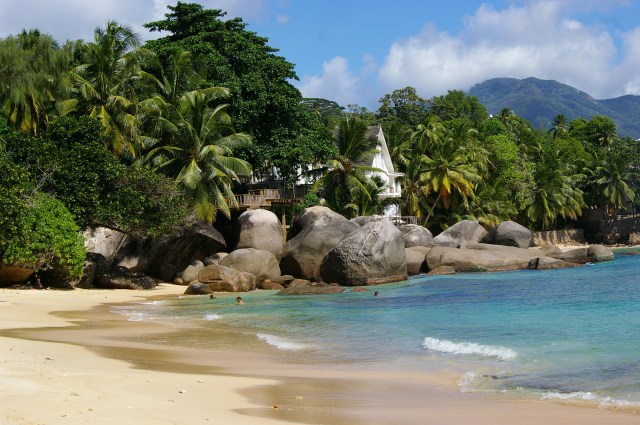


The second road-trip route we planned out would take us to the wonders of the southern part of Mahé Island.
Setting off again from Constance Ephilia we took the road south towards our first stop of Anse-Intendance beach making it one of our longer single drives. The route hugged the west coast of the island and took us just under and hour to safely navigate our way along the 28km route.

The pristine shores of Anse-Intendance beach are renowned for their relatively untouched beauty. This secluded spot offers the ideal escape from the world’s hustle and bustle and the vast sandy shores are a welcome sight to the few travellers who make the journey here.
Parking our car in the small car park, we gathered our things and walked the short distance through the trees to the beach paradise ahead. Setting up in a shady spot, Holly and I took the time to enjoy the sights and dip our toes in the water.
One thing to note is that Anse-Intendance is known for its strong currents and potentially hazardous swimming conditions, so while we wadded in to our waists, we were reluctant to swim here as the current was extremely strong and you could feel it pulling at you. While some did venture out further for a swim, I’d advise to exercise caution and avoid venturing too far from the shore.

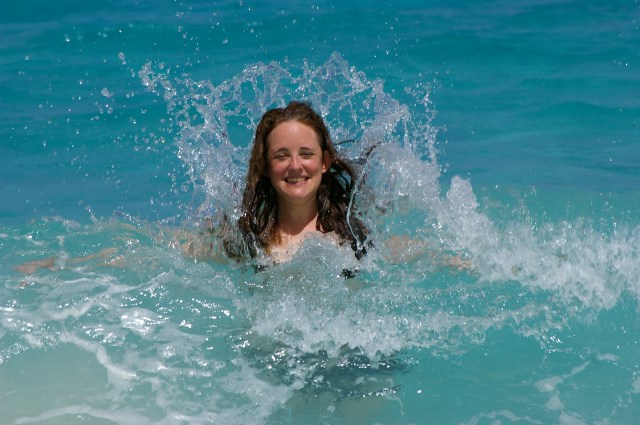
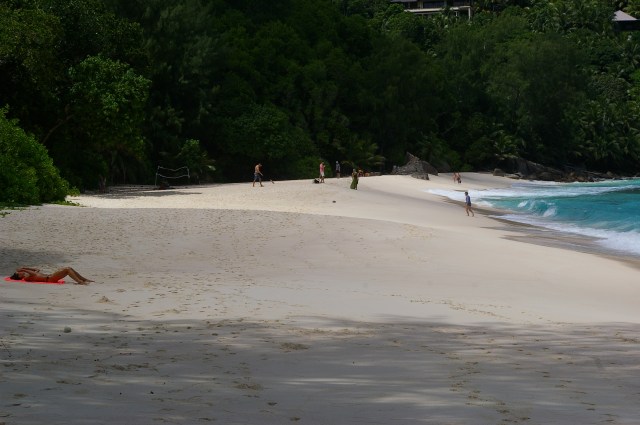
Having stopped here for around an hour we continued on to our most southerly spot; Police Bay beach.
Embraced by granite boulders and swaying palms, this tranquil cove takes a bit of adventuring to find and the off-road tracks making driving to it challenging. Parking our car on the side of one of these tracks we walked the final kilometre to the beach via the dense trees.
The picturesque setting once again hides the deceptively strong waves and currents that make swimming here risky. In what seems like a theme for the southern part of the island, signposts warn beach-goers of the dangers of going too far into the waves.
The third stop was to our last new beach of the trip and is a 25 minute drive to the east coast.
Here we found Anse Royale beach that beckoned us to its shores. With the waters generally being calmer compared to previous beaches, this spot was one that local people appeared to frequent more and its narrow sandy shore was being utalised by numerous local families.
Having had our fill of beaches, we made the six minute drive further north to something slight different.
Here we found the Domaine de Val des Pres craft village; a rather quaint haven of local craftwork.
Domaine de Val des Pres is an artisanal craft village that showcases traditional Creole culture through its artistic displays. It consists of a 19th century plantation house surrounded by numerous huts that are now open with all sorts of fantastic pottery, paintings, woodwork, and clothing on display.
Having taken a look around each shop – and making a couple of purchases to take home with us – we explored the open plantation house before setting off back across the mountain roads to relax at our wonderful resort.





Where to avoid
Situated within walking distance of Constance Ephillia is the Sauzier Waterfall, a supposedly enchanting natural wonder.
However, after our recent visit, it became apparent that this so-called gem may not be worth the hype or the “unofficial” entrance fee of 50 Seychelles Rupees per person (about £3 per person).
Sauzier Waterfall is often marketed as a picturesque cascade amidst the Seychelles’ captivating scenery, so Holly and I were keen to see it, especially given how close it was to our resort.
We’d seen the waterfall on Google and it looked straightforward to get to – which was true. From the pictures it looked like a magnificent site to see. However, the reality didn’t quite live up to the expectation.
The waterfall itself was rather modest in size, failing to evoke the awe-inspiring emotions we were anticipating. Surrounding flora seemed overgrown, blocking any chance of a panoramic view or an ideal photo opportunity. While the Seychelles boasts numerous breathtaking sights, the Sauzier Waterfall pales in comparison.
Coming off the Port Launey Road onto a side street – just before the Church of Sts. Peter and Paul – we walked up the slope towards where the waterfall was. However, when we reached the end of the road we were met by a closed gate which was manned by a family whose house was just next door.
They were charging people 50 Seychelles Rupees per person to access the waterfall. Annoyingly, we hadn’t brought any money with us as we didn’t expect a hidden cost here. Fortunately – on this occasion – the family took pity on us and gave us access for free.
Going through the gate, we hiked through the vegetation along an uneven trail towards our goal – past a couple of deserted buildings. While some may enjoy a challenging trek, it’s essential to consider that the trail lacks proper maintenance and can be slippery, especially during the rainy season. The hike’s difficulty may discourage families with young children or elderly individuals from visiting, further limiting its appeal.
For an attraction that charges an entrance fee (albeit it one we didn’t pay), visitors might expect basic amenities to enhance their experience. However, there are no rest areas, benches, or picnic spots, making it inconvenient for tourists to rest.
While there was water free flowing when we visited in May, given the name “waterfall,” one would presume a significant flow of water cascading down the rocks all year round. Unfortunately, this isn’t the case and in some months the stream is reported to be very weak and in some cases totally non-existent.
Finally, the waterfall is a gathering point for a lot of local teenagers who show off their diving skills. While this can be entertaining to watch, it does take over the small amount of space available pretty quickly making any stay a short one.
The waterfall is fine for a flying visit if you’re in the area and have time to kill, but I’d strongly urge against searching for it and travelling to it as travellers seeking memorable experiences should explore other enchanting spots that Seychelles has to offer, where they can fully immerse themselves in the island’s breathtaking beauty.
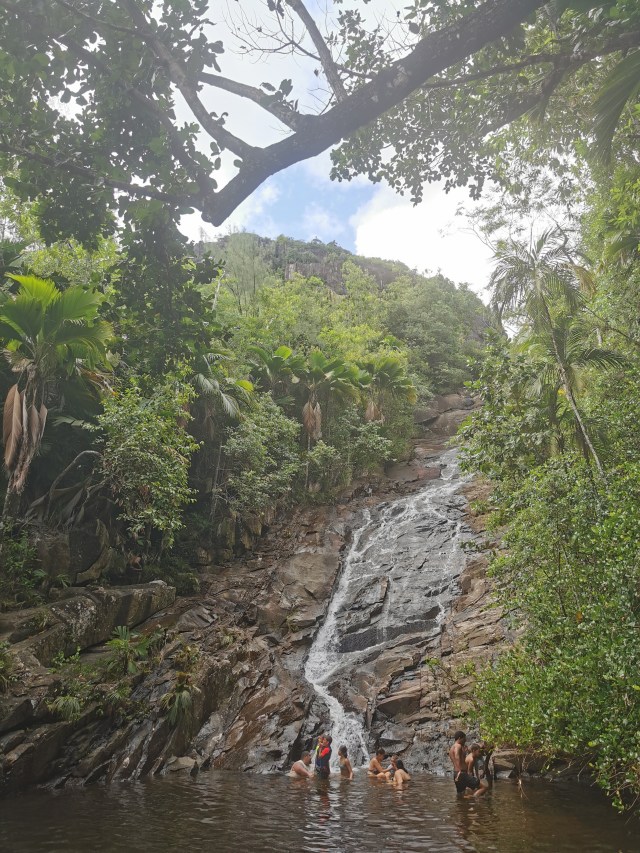
My other suggestion of something to avoid in the Seychelles is not so much about the destination, more about the tour provider.
Before heading out to the Seychelles, Holly and I were desperate to spend a day island hopping and to see two of the closest and most popular destinations; Praslin and La Digue.
However, not all journeys to these paradise islands are created equal and the tour entitled “From Mahé: Praslin and La Digue Tour with Transfer and Lunch” advertised on Get Your Guide is one to avoid and left us questioning the value of our £373.10 trip for two.
First thing to do is look at the description on the website of this tour. In a nutshell it’s outlined as a great way to explore two Seychelles islands in one day with a “guided tour” departing from Mahé that would let us trek through the lush Vallee De Mai reserve on Praslin and enjoy a delicious Creole lunch on the tropical La Digue. Pretty much none of this statement is true.
Let’s start at the beginning. The day began with high hopes as we eagerly awaited the adventures that lay ahead. However, as we prepared to embark on our journey from our resort, we were met with the disheartening reality of an extremely late pick-up. With the beauty of hindsight, this delay set the tone for what was to come.
Upon reaching the picturesque Eden Island harbour near Victoria, we found ourselves confined to a state of limbo, as we waited for what seemed like an eternity for the promised boat transfer. Minutes became over an hour, and our precious time on the islands slipped away.
Finally, our vessel arrived, but any excitement quickly turned to dread as we boarded a small boat that seemed ill-prepared for the journey ahead. As we ventured into the open ocean, the vessel’s small size made every wave a painful reminder of its unsuitability for such a crossing. To top matters off, we also had to make a pit stop so the captain could refuel the vessel – more time wasted for our trip!
To add to our discomfort, the boat’s engines sputtered and faltered, turning what should have been an hour and a half crossing into a gruelling and nausea-inducing two-hour ordeal. Any semblance of excitement we had for Praslin and La Digue was overshadowed by the lingering distress of the boat journey.
Upon finally reaching the much-anticipated islands, our time on both Praslin and La Digue was tragically short-lived. Instead of exploring the unique and captivating sights that these islands had to offer, we were herded like cattle to our stops, with little opportunity to appreciate the beauty that surrounded us. A mere five-minute pause to see the famous coco de mer (the largest nut in the world) on Praslin (not quite the trek we were promised) and a brief visit to the beautiful Anse Lazio beach was the extent of our Praslin island exploration, leaving us feeling unfulfilled and longing for more meaningful experiences.
Our time on La Digue wasn’t any better, with the only stop there lasting less than an hour as we were ushered briefly to see the stunning Anse Source D’argent beach.
As if our disappointment wasn’t already profound, the low point of the tour came during the lunch stop. The restaurant selected by the tour organisers was nothing short of a disaster. Flies swarmed the establishment, landing brazenly on the food, creating an unhygienic and unpleasant atmosphere.
This lack of regard for basic cleanliness and customer satisfaction was deeply disheartening, leaving us questioning the overall quality of the trip and the care taken in organising such experiences. At one point Holly and I moved to an outside table to eat our food away from the swarms of flies only to be told by the restaurant owners we were not allowed to eat out there!
This was the final straw for me, and – in no uncertain terms – I explained how I was not eating inside their disgusting establishment. Had the price of the meal not already been included in the trip, I would have walked out without paying.
During this whole encounter, we were left with the dreaded reminder that we still had to cross the ocean back to Mahé Island in that small boat again. The crossing back was no better as the boat bounced and crashed off and through the waves. It’s not an exaggeration to say, that at some points we hit the water so hard that everyone on board was a little concerned that we would capsise!
The final insult was that the rear door on the boat didn’t seal properly either and the person who sat next to this door spent the full two hours being waterboarded by the inflow of water crashing through the gaps.
Once we arrived back on the island and back on dry land, everyone on the trip couldn’t get off the boat quickly enough. The final lapse in any form of management was that there was no vehicles available to drive people back to their hotels and we ended up having to get into the back of a battered old car of one of the operators to go back to our resort.
After enduring the subpar tour, we felt compelled to express our discontent to Get Your Guide. To their credit, they recognised the legitimacy of our concerns and provided a partial refund of £279.83 (around 75% of the fee we paid). While we appreciated their willingness to address our grievances, it did little to compensate for the hours lost and the memories we had hoped to create.
To sum up, Praslin and La Digue undoubtedly remain gems of the Seychelles and worthy of any traveller’s bucket list. Both are worth a visit and I’m sure there are providers out there that operate a lot better than this one did.
The warning I have from our trip is to avoid the tour listed above and look for something else.
Priced at £373.10 for two people, the experience left us with a bitter taste and a profound sense of disappointment, wasted time and money. I hope that others can avoid our disappointment and I encourage travellers looking to visit Praslin and La Digue to seek alternative ways of explore the wonders of these two beautiful islands.
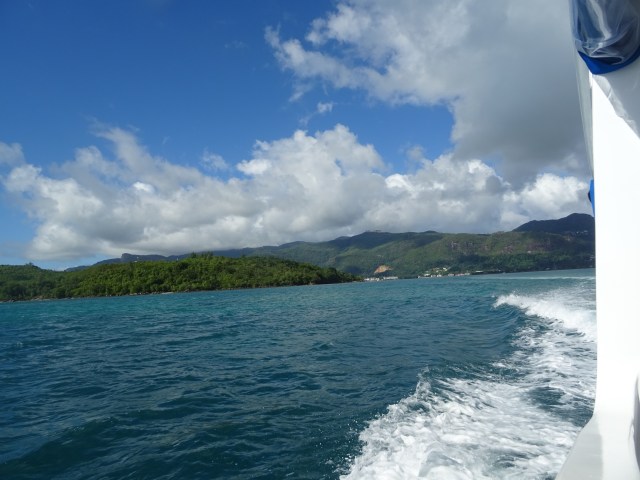
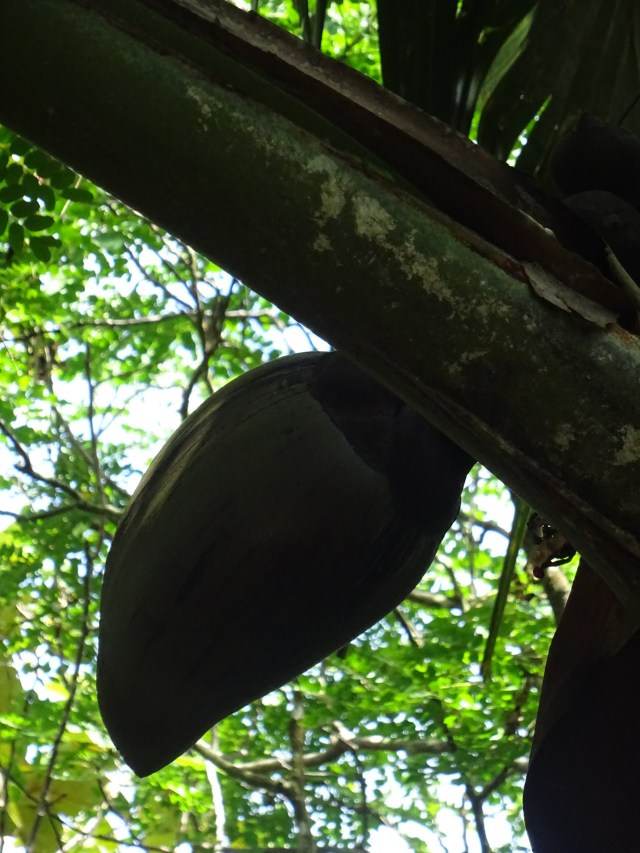

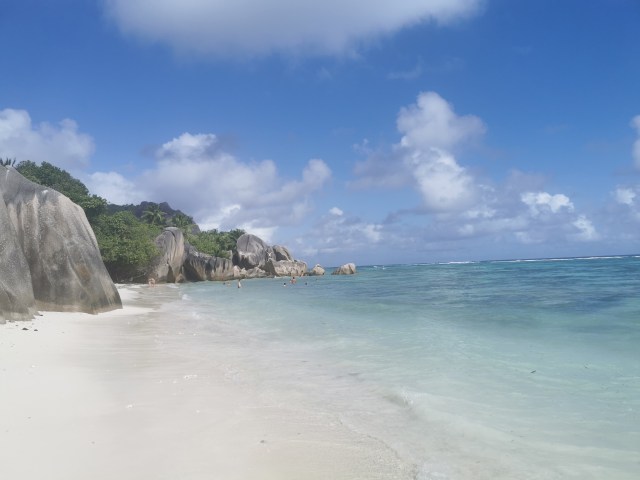
Great places to eat
Unlike many of my blogs, this section focuses on the main restaurants that are at Constance Ephelia.
One thing to note about all these restaurants – with the exception of Corossol – is that you must book a table in advance and this can be done from the hotel’s reception area a day or two before you want to go. If you don’t make a booking then spaces may all be taken meaning you’ll potentially miss out.
As a way to manage this, Holly and I made sure we had as many restaurants booked up as early as we could and kept doing this for the duration of our stay.
When we booked our room we selected the option to have all our breakfasts and dinner. Given the resort’s remote location, eating anywhere other than the hotel would prove tricky. Therefore my suggestions are very much what is available there.
Fortunately, all the restaurants are excellent and offer a wide range of cuisines that are likely to please all palates.
The first of these is Corossol which hosts the buffet style breakfasts each morning as well as a range of themed buffet-style dinners most nights.
The sheer size of the buffet and the range of food available is staggering. From curries and seafood to salads and pasta, there really is something for everyone.
This restaurant embraces the island’s rich culinary heritage and presents an enticing array of dishes. From freshly caught seafood to vibrant tropical fruits and spices, the menu celebrates the Seychellois culture with a touch of international flair. Whether you’re a seafood lover or a vegetarian enthusiast, Corossol caters to diverse palates, making it a true haven for foodies.
Upon arriving at Corossol, we were greeted by a warm and inviting ambiance. The restaurant’s design reflects traditional Creole architecture, with thatched roofs and open-air seating that lets the gentle sea breeze infuse every moment of your meal. The mesmerising views of the Indian Ocean and lush gardens provide a picturesque backdrop, elevating the dining experience to a whole new level of bliss.
It’s important to note that while the food was included in our package, drinks, such as alcoholic beverages and specialty cocktails, were not covered. However, the diverse and creative drink menu at Corossol offered an opportunity to sample delightful concoctions and local spirits, further enhancing our gastronomic experience.
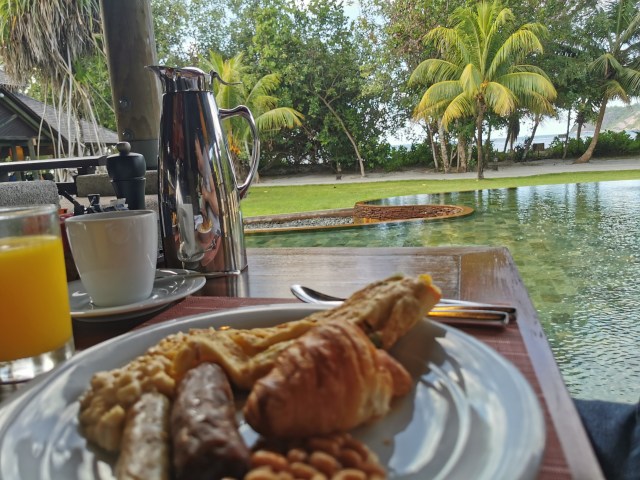

The next restaurant that is among the gems is the Asian restaurant, Adam & Eve, a culinary haven that transports diners to the diverse and exotic flavors of Asia. Conveniently for us, this restaurant we mere feet away from our room, making it the first restaurant that we ate at during our stay.
Adam & Eve offers an exquisite blend of flavours, drawing inspiration from the rich culinary traditions of various Asian countries.
The restaurant’s menu celebrates the diversity of Asian cuisine, featuring delicacies from Japan, China, Thailand, Vietnam, and beyond. Each dish is meticulously crafted to showcase the region’s finest ingredients, artfully combined to create harmonious flavours that leave a lasting impression on every diner.
Dining at Adam & Eve is a sensory delight. A particular favourite here for us was to start our meal with an appetisers like the delectable Thai-style spring rolls with a tangy dipping sauce.
The restaurant also boasts a selection of traditional Thai dishes, including the ever-popular fragrant pad-thai that tantalises the palate with a symphony of flavours and textures. Adventurous eaters may opt for fiery curries that pack a punch of spice.
Adam & Eve offers more than just an exceptional dining experience. Surrounded by lush tropical greenery and the serene azure waters of the Seychelles, the restaurant’s ambiance is an idyllic blend of nature and sophistication.
A visit to Adam & Eve at Constance Ephelia is not just a meal; it is a memorable culinary voyage that celebrates the richness and diversity of Asian cuisine.
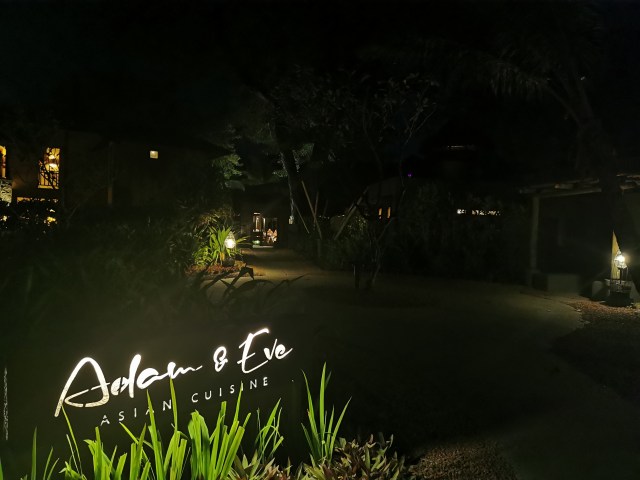
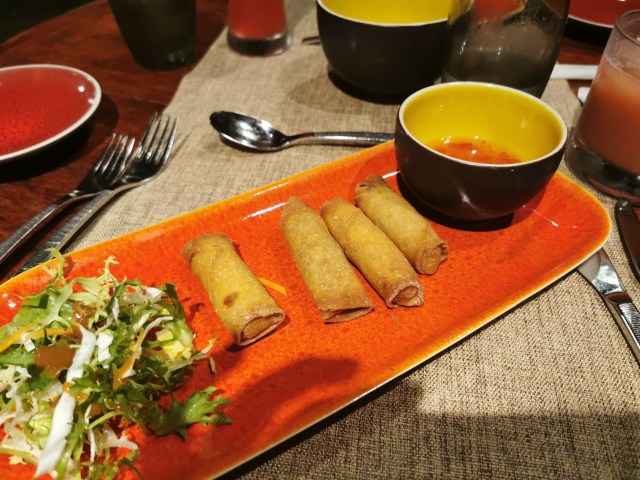
The third stop is the Greek-style restaurant named Helios.
While this was probably our least favourite of the restaurants on offer, Helios is still a worthy place to enjoy an evening meal or two.
Welcoming us to the restaurant were a wide array of enticing starters awaits including the tangy goodness of Greek tzatziki, paired with warm pita bread.
The main courses at Helios showcase a rich diversity of Greek culinary traditions which allowed us to sink our teeth into a tender and succulent meat and fish dishes.
As the sun set over the horizon, we still (somehow) managed to find space for one of their heavenly desserts that keep you wanting more.
Beyond the delectable cuisine, the ambiance at Helios is equally captivating. The restaurant boasts an elegant and inviting setting, providing the ideal backdrop for a romantic dinner for two.
Overall, Helios offers an enchanting experience where the flavours of the Mediterranean come alive on your plate.
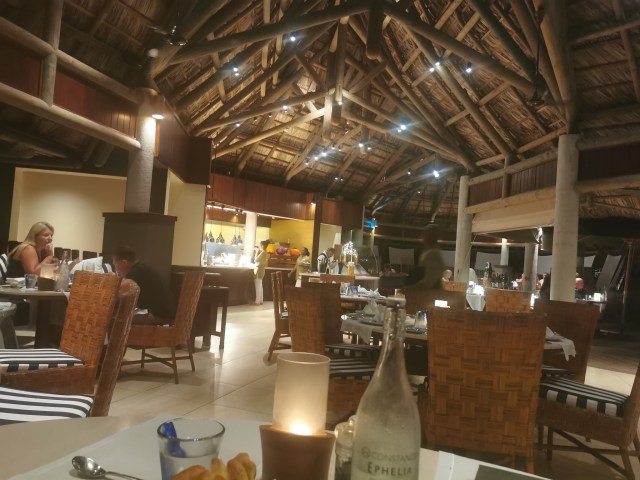


The final restaurant to mention was easily our favourite and one we ended up eating at more than any other.
Located at the north end of the resort, Seselwa is a seafood-themed restaurant that beckons food enthusiasts to embark on a gastronomic journey like no other. With the azure waters of the Indian Ocean as its backdrop, Seselwa is renowned for its brilliant seafood dishes and exclusive beachside dining experience.
Seselwa prides itself on offering a delectable array of seafood dishes that pay homage to the bountiful treasures of the Indian Ocean. From the freshest catch of the day to flavourful crustaceans and succulent shellfish, the menu is a testament to the culinary wonders the ocean has to offer.
Among the many tantalising seafood offerings, the Octopus Curry stands out as a true gem. Holly and I had the pleasure of savouring this mouthwatering dish on more than one occasion, and we were left mesmerised by the perfect blend of flavours and tender texture of the octopus.
Cooked to perfection in a fragrant coconut-based curry, the dish showcased the culinary artistry of Seselwa’s talented chefs, who transform the humble octopus into a gourmet delight.


For an unparalleled dining experience, Seselwa offers the opportunity to enjoy an exclusive meal on the edge of the pristine Port Launay beach.
Holly and I were thrilled to partake in this unforgettable beach-side dining experience one evening that ended up being one of our lasting highlights from our stay. Looked after exclusively by one of the restaurants members of staff, we were presented with our pre-selected menus having been picked up from our room by one of the resorts shuttle buses.
Arriving at the table, we were greeted by beautiful candle-light that flickered and danced in the twilight as the sun set against the ocean backdrop.
While the beach-side dining experience at Seselwa is undoubtedly a luxurious treat, it is essential to note that it comes with an additional cost of approximately £280 for two people.
While this may be a splurge, the once-in-a-lifetime experience and the memories created are well worth it. For those celebrating special occasions or looking to create cherished moments with loved ones, the beach-side dining option is a perfect choice to make your time in Seychelles truly unforgettable.
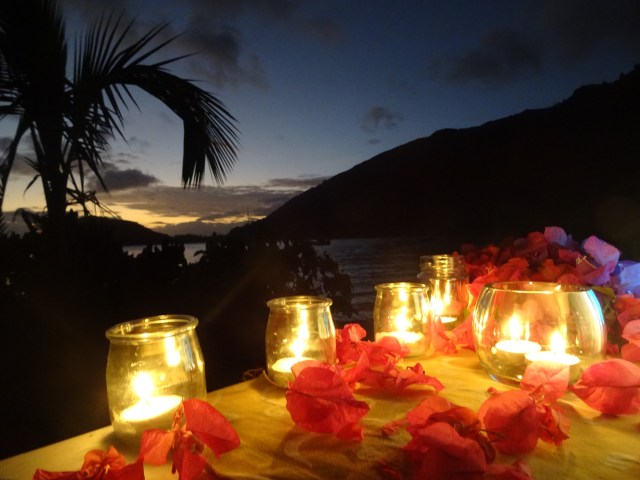

Useful links
Arul Mihu Navasakthi Vinayagar Temple
From Mahé: Praslin and La Digue Tour with Transfer and Lunch
Remember you can follow World Complete on Twitter, Instagram, Pintrest, Tumblr and Facebook send your comments and pictures from your travels using #WorldComplete and #Travel.

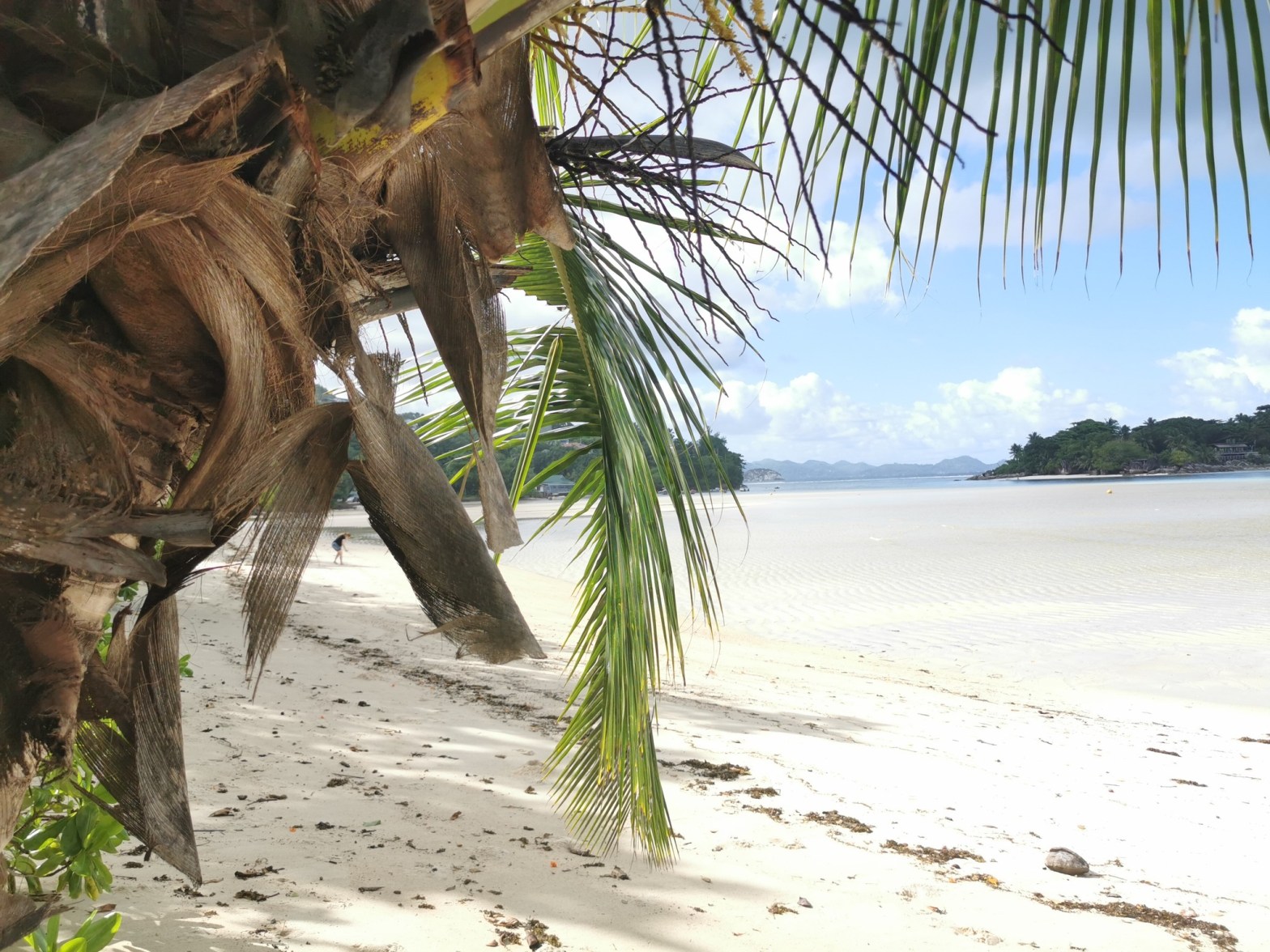
What a really interesting history the Seychelles has; I must admit I did not know too much about it but reading this has made me want to find out more. It would be a place I would like to visit, and it looks like you had a wonderful honeymoon that was worth the wait!
LikeLiked by 1 person
Thank you for reading the blog and the kind comments. And yes, the honeymoon was everything we hoped it would be… 😍
LikeLike
wow!! that looks like heaven! The Seychelles has been on my radar and I really really want to go so badly!! this is a super comprehensive and easy to follow guide I will definitely be keeping for when I go! Thank you so much for sharing, great post 🙂
LikeLiked by 1 person
Hi Andrea. Thanks so much for taking the time to read the blog. The Seychelles is an amazing place and I really hope you get the chance to visit it soon. No words, nor pictures, do it justice. Thanks for stopping by 🙂
LikeLike